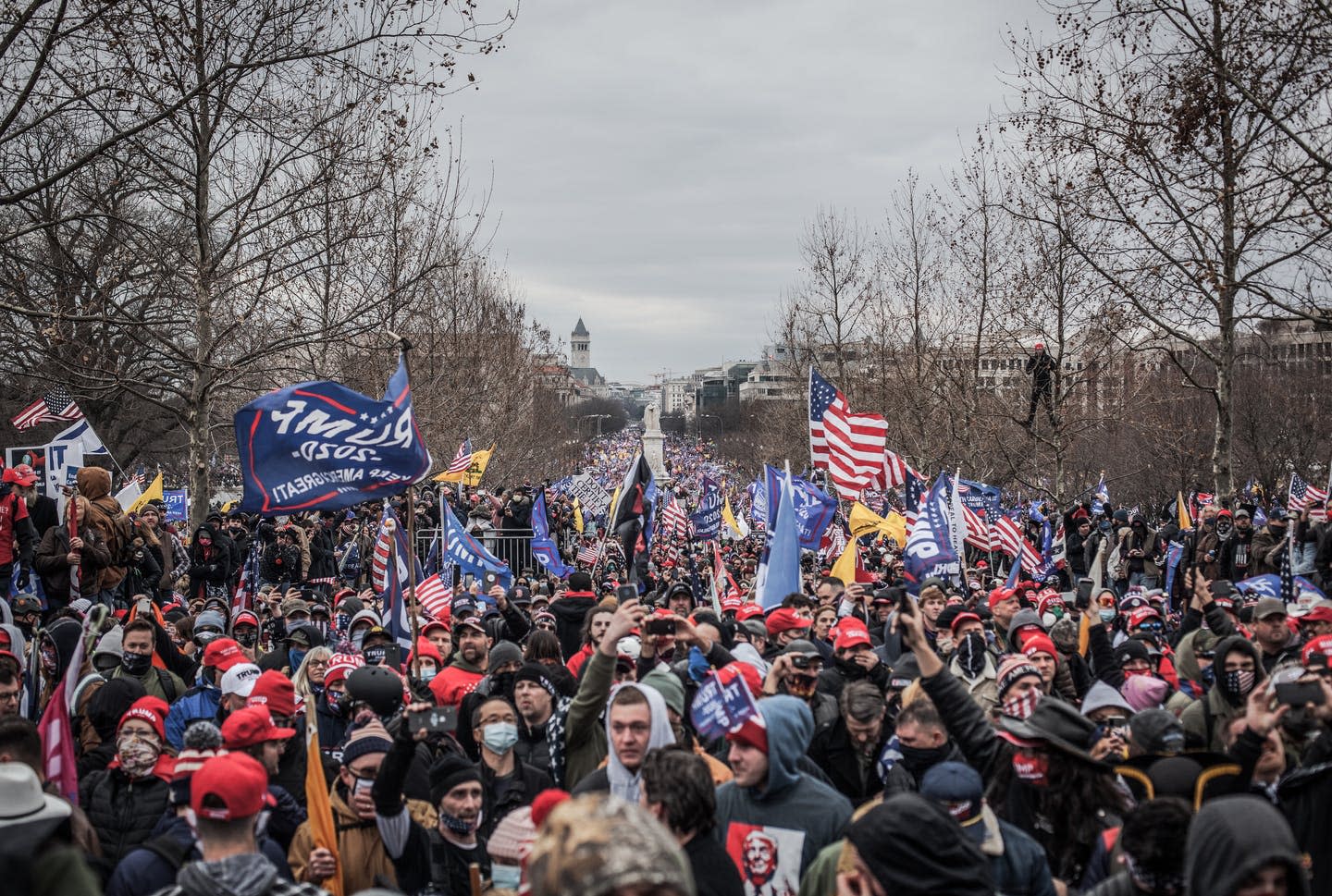The terror inflicted on the US Capitol on January 6 revealed America’s problem with violent extremism.
The FBI and other law enforcement agencies have started gathering events that day, while trying to prevent any imminent attack. Dozens of people were arrested and charged with the attack – the vast majority are men.
In the wake of these events, there have been stories attributing violence and destruction to “white male anger”, “violent male anger” and “angry white men”.
But what about women?
Distilling the violent insurrection into a story of furious male fury is to ignore the threat that women in the crowd posed to Congress officials, law enforcement officials and US democracy that day.
Long history of female involvement
Several women were identified as alleged participants in the January 6 events. These women include a former school occupational therapist, a county sheriff’s office worker, a real estate agent and a former mayoral candidate.
At least one woman is being investigated for her role in organizing the attack with other members of the Oath Keepers, a far-right militia movement. And Ashli Babbit, a veteran, was shot dead by the police while trying to invade the Senate.
The women who participated in the siege of the Capitol are part of a long history of female participation in extremist violence, both in the United States and abroad.

Women have supported American far-right organizations and causes for centuries. In her recent book on women at the forefront of contemporary white nationalism, author Seyward Darby writes that women are not “incidental to white nationalism, they are a sustaining feature”.
Since the late 1800s, women have supported and empowered the white supremacist terrorist organization Ku Klux Klan, while hundreds of thousands have joined their female affiliate, Ku Klux Klan Women, and their predecessors.
Women helped establish Klan’s culture, strengthened their recruiting efforts and manufactured their advertising. Despite their hyper-masculine ideology, which identifies white men as the main arbiter of political power, women have also held leadership positions within the modern Klan.
More recently, women have joined the far-right Proud Boys movement, which has openly recruited female soldiers. In December, a growing divide between proud boys and girls was reported. After experiencing an intense sexist reaction from the men in the organization, the women led by MMA fighter Tara LaRosa started their own group, Proud Girls USA.
Leaving one extremist organization to form another suggests a deep commitment to the cause of the extreme right.
The discount is dangerous
A 2005 study noted a disconnect between the increase in the number of women within right-wing American terrorist organizations and the attention it received from law enforcement.
Despite a marked increase in the involvement of women in acts of terror against the state and racial minorities, security officials have failed to disclose, research and interrogate women operatives in these organizations, even after they have become known to law enforcement officials.
There is also evidence that far-right American women sought inspiration and tactical knowledge from women involved in extremist violence abroad.
Evidence from the global war on terrorism points to the potential dangers of ignoring the growth of violent extremism among women. In Iraq, for example, women terrorists carried out a large number of deadly suicide attacks against American assets during the US occupation.
The rest of the world has since been forced to deal with the reality of violent women after women terrorists staged lethal attacks in Nigeria, Somalia, Tunisia, the Philippines, Indonesia and France.
Recent terrorist attacks in American cities like San Bernardino, California and Las Vegas, which featured women among the perpetrators, confirm that violent women have already inflicted damage on American soil.

Gender bias can be deadly
In fact, my research suggests that attacks by women terrorists are often more destructive than those carried out by men.
In an analysis of more than 2,500 global suicide attacks, I show the disparities in the severity of attacks by men and women are greatest when gender stereotypes suggest that women are neither violent nor political. Such troops can blind security officials and civilians to the threat posed by women terrorists, making them ignore the potential for female complicity.
Terrorist women, including in Iraq, Israel and Nigeria, managed to deflect suspicion because they were women. My research shows that gender bias can become deadly when it prevents effective counterterrorism policies, such as surveillance, searches and interrogations, from being implemented.
In addition, since ordinary citizens played an unusual role in exposing the identities of Capitol attackers, gender biases among civilians are also relevant. Failure to accept the complicity of women in the siege of the Capitol and in the wider movement can prevent the identification of women offenders and hinder efforts to punish and prevent future attacks.
American women have been fundamental pillars of support for violent right-wing extremists for centuries. They were right-wing extremists themselves – racist skinheads, neo-Nazis and Klans women. Women are also lawyers, three percent and proud boys. They were rioters on Capitol Hill.
To construct an accurate account of the attack on the Capitol, it is necessary to ask “Where are the women?” And the answer is: “Right there”.
This article was republished from The Conversation, a nonprofit news site dedicated to sharing ideas from academic experts. It was written by: Jakana Thomas, Michigan State University.
Read More:
Jakana Thomas does not work, consult, own shares or receive funding from any company or organization that would benefit from this article and has not disclosed relevant affiliations other than his academic appointment.
